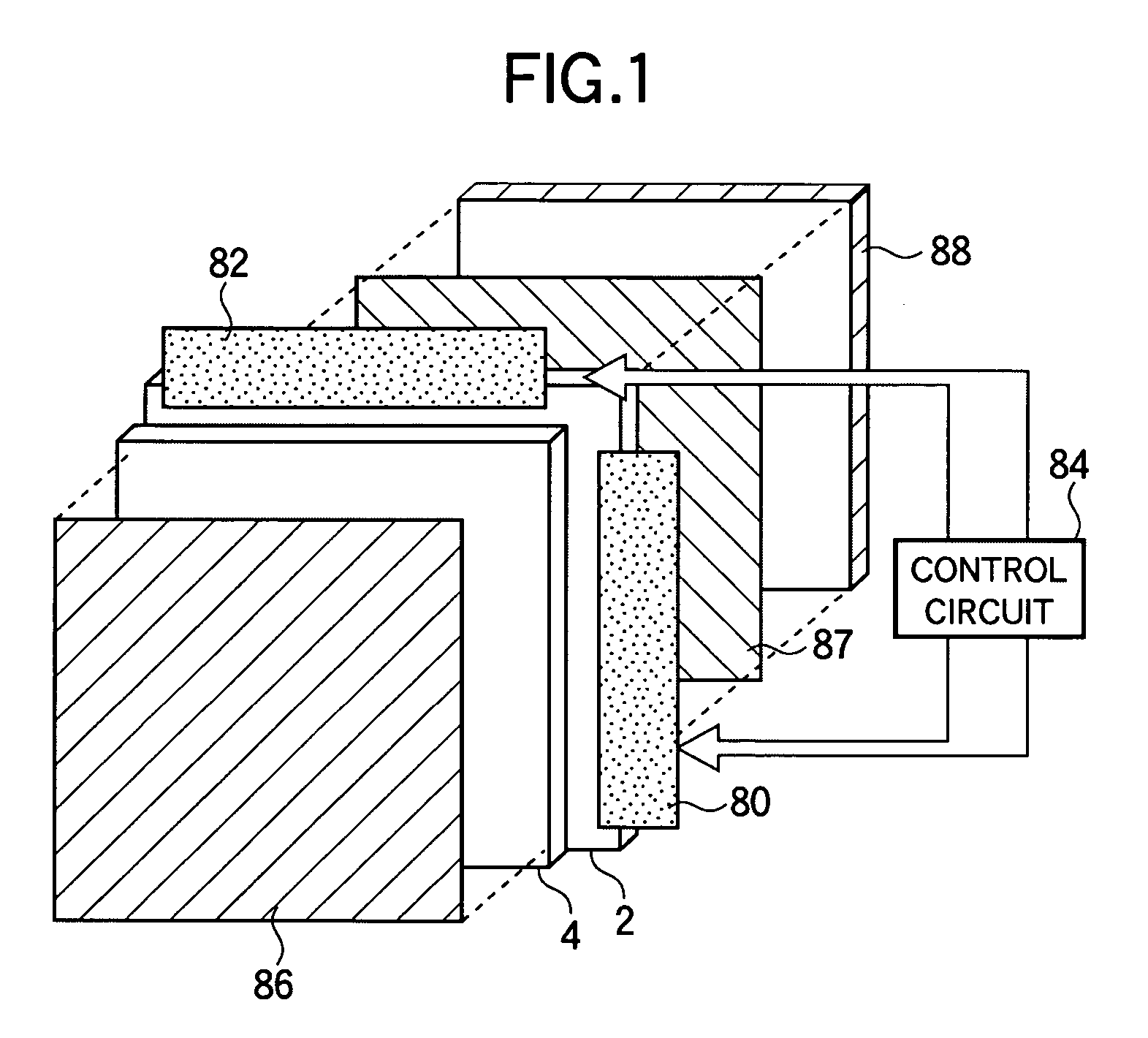Liquid crystal display device with a buffer capacitor electrode disposed in a non-pixel electrode region
a liquid crystal display and buffer capacitor technology, applied in static indicating devices, instruments, non-linear optics, etc., can solve the problems of more serious display irregularities, difficult to obtain high luminance, and relative dense sticking, and achieve high display characteristics.
- Summary
- Abstract
- Description
- Claims
- Application Information
AI Technical Summary
Benefits of technology
Problems solved by technology
Method used
Image
Examples
first embodiment
[0067]A description will now be made with reference to FIGS. 1 to 13 on a substrate for a liquid crystal display, a liquid crystal display having the substrate, and a method of driving the display according to a first embodiment of the invention. FIG. 1 shows a schematic configuration of the liquid crystal display of the present embodiment. As shown in FIG. 1, the liquid crystal display includes a TFT substrate 2 having gate bus lines and drain bus lines formed across each other with an insulation film interposed between them and a TFT and a pixel electrode formed at each pixel. The liquid crystal display also includes an opposite substrate 4 having color filters and a common electrode formed thereon and a liquid crystal 6 (not shown in FIG. 1) having, for example, negative dielectric constant anisotropy sealed between the substrates 2 and 4.
[0068]A gate bus line driving circuit 80 loaded with a driver IC for driving the plurality of gate bus lines and a drain bus line driving circu...
second embodiment
[0091]A description will now be made with reference to FIGS. 14 to 15D on a liquid crystal display according to a second embodiment of the invention. In the liquid crystal display of the first embodiment of the invention, although a relatively high light transmittance can be achieved even at a sub-pixel B, luminance may not be improved so much because of a reduction in the aperture ratio of the pixels. As shown in FIG. 9, the most significant factor reducing the aperture ratio is the TFT 23. FIG. 14 shows a configuration of the liquid crystal display of the present embodiment. As shown in FIG. 14, in the present embodiment, a TFT 23 is disposed such that it extends across a gate bus line 12(n+1) that belongs to the next pixel. As a result, the area occupied by the TFT 23 in the pixel region of interest is reduced to improve the aperture ratio of the same.
[0092]However, when the TFT 23 is disposed so as to extend across the next gate bus line 12(n+1), either drain electrode 23a or so...
third embodiment
[0095]A description will now be made with reference to FIGS. 16 and 17 on a liquid crystal display according to a third embodiment of the invention. A factor that reduces the yield of manufacture of liquid crystal displays according to the second embodiment as shown in FIG. 14 is shorting defect between the drain bus line 14 and the connection electrode 25. Since the drain bus line 14 and the connection electrode 25 are formed in the same layer and are extended a relatively long distance in proximity to each other, a shorting defect attributable to such as dust is likely to occur at a photolithographic process. When the connection electrode 25 and the pixel electrode 17 of the sub-pixel B are disposed in an overlapping relationship, a capacity formed between the connection electrode 25 and the pixel electrode 17 will decrease the voltage at the pixel electrode 16 of the sub-pixel A, which results in a reduction of the luminance of the pixel as a whole. When the interval between the ...
PUM
| Property | Measurement | Unit |
|---|---|---|
| polar angle | aaaaa | aaaaa |
| polar angle | aaaaa | aaaaa |
| time | aaaaa | aaaaa |
Abstract
Description
Claims
Application Information
 Login to View More
Login to View More - R&D
- Intellectual Property
- Life Sciences
- Materials
- Tech Scout
- Unparalleled Data Quality
- Higher Quality Content
- 60% Fewer Hallucinations
Browse by: Latest US Patents, China's latest patents, Technical Efficacy Thesaurus, Application Domain, Technology Topic, Popular Technical Reports.
© 2025 PatSnap. All rights reserved.Legal|Privacy policy|Modern Slavery Act Transparency Statement|Sitemap|About US| Contact US: help@patsnap.com



